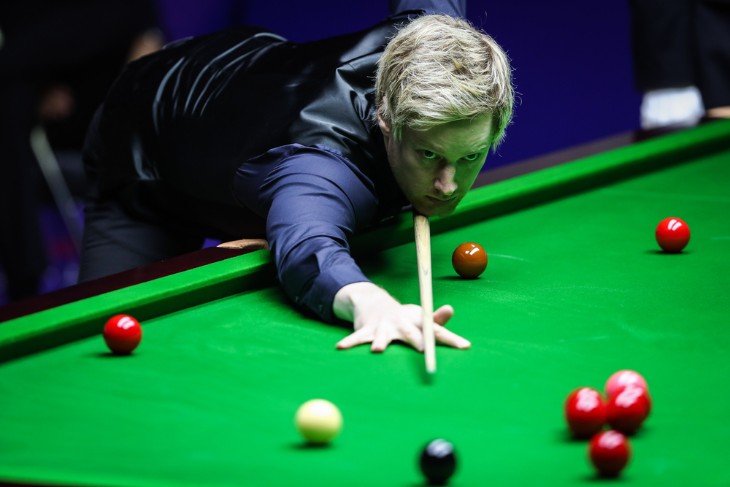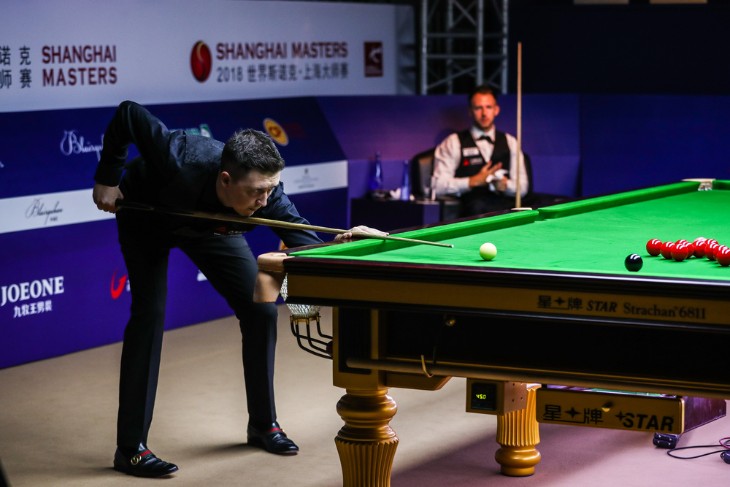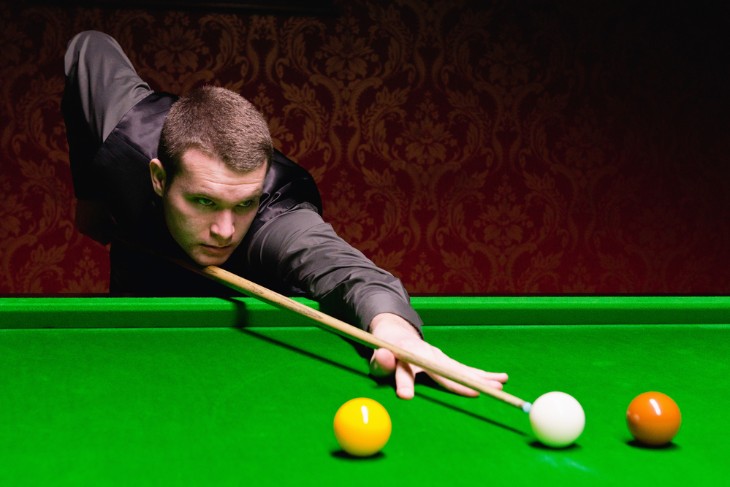- Understanding the Basics of Fouls in Snooker
- The Thrill and Challenge of Next Foul Betting
- Key Factors Influencing the Likelihood of a Foul
- Analyzing Players' Styles and Techniques for Foul Prediction
- The Role of External Factors in Influencing Fouls
- Utilizing Statistical Data in Foul Betting
- Evaluating Player’s Past Foul Tendencies for Accurate Predictions
- The Impact of Match Stage and Pressure on Foul Occurrences
- Conclusion
Snooker, with its intricate blend of skill, strategy, and precision, not only captivates audiences but also offers unique betting opportunities. Among these is the fascinating world of 'Next Foul' betting in snooker. This article delves into the nuances of predicting fouls in snooker, a task that combines keen observation, understanding of the game, and a bit of foresight. Whether you're a seasoned bettor or new to the snooker betting scene, mastering the art of foul betting can add an exciting layer to your betting strategy.
Understanding the Basics of Fouls in Snooker
In snooker, understanding fouls is key to appreciating the game's complexity and strategy. A foul in snooker happens when a player breaks one of the game's rules during their shot. These rules are there to make the game fair and challenging. Each foul in snooker gives points to the other player, which can change the course of the match.
The most common foul is failing to hit the correct ball first. In snooker, players must hit a specific ball depending on the game situation. If they hit the wrong ball first, it's a foul. Another common foul is potting the cue ball, known as a 'scratch'. This usually happens when a player tries to make a difficult shot or loses control of the cue ball.
Players can also commit a foul by hitting no balls at all. This can occur if they miscalculate a shot or try to play a safety shot but miss all the balls. Another foul is hitting a ball off the table. This is rare but can happen with a powerful shot.
Fouls can also happen if a player touches any balls with their hand or cue, other than the cue ball. This rule ensures players play fairly and don't move the balls to make shots easier.
Understanding fouls is crucial for anyone watching, playing, or betting on snooker. Fouls can lead to a player losing a significant advantage or even the match. They add an element of risk to every shot, making snooker a game of both skill and strategy. For those betting on the next foul, knowing these rules helps in making more informed predictions about how a match might unfold.
[promotion:173]
The Thrill and Challenge of Next Foul Betting
Betting on the next foul in snooker offers a unique thrill and challenge. Unlike other types of betting that focus on the final outcome or scores, next foul betting is about predicting a specific event within the game. This form of betting requires not just knowledge of the game, but also a keen sense of observation and understanding of the players' current state.
The excitement in next foul betting lies in its unpredictability. Fouls can happen at any moment, often unexpectedly. This uncertainty adds a level of excitement and anticipation for bettors. They must stay closely engaged with the match, watching each player's moves and strategies with a keen eye, which makes watching snooker more interactive and engaging.
The challenge in this type of betting is understanding the various factors that can lead to a foul. Bettors need to consider the players' styles, their current form, and even their mental state. For instance, a player who is under a lot of pressure or trailing in the game might take riskier shots, increasing the chance of a foul. Similarly, a player not in their best form might make uncharacteristic mistakes.
Next foul betting also requires a deep understanding of the game's rules and the types of fouls. Bettors need to know what constitutes a foul in different situations, which adds another layer of complexity to their betting strategy.
Next foul betting in snooker is both thrilling and challenging. It appeals to those who enjoy the intricacies of the game and like to engage with it on a deeper level. This type of betting tests a bettor's understanding of snooker, their ability to read the game and the players, and provides an exciting way to participate in the action of the match.

Key Factors Influencing the Likelihood of a Foul
In snooker, several key factors can influence the likelihood of a player committing a foul. Recognizing these factors is crucial for bettors focusing on foul betting.
- Player's Experience and Skill Level: A player’s overall experience and skill level are significant indicators. More experienced players, who have honed their skills, are generally more controlled in their shot selection and execution, reducing the likelihood of fouls. In contrast, less experienced or lower-skilled players may struggle with precision and decision-making, leading to more frequent fouls.
- Playing Style: The playing style of a player greatly influences their chances of committing a foul. Aggressive players, who often go for difficult pots and complex positions, may have a higher risk of fouls. Conversely, players with a more conservative or defensive style tend to play safer shots, which can reduce the chance of fouling.
- Psychological State and Pressure: The mental state of a player and the pressure of the match can significantly impact the likelihood of a foul. Players under stress or those unable to handle the mental demands of high-stakes moments are more prone to errors. This factor becomes particularly critical in key frames or when players are behind and feel pressured to make a comeback.
- Physical Condition: A player’s physical condition, including fatigue and health, can also contribute to fouls. Tiredness can lead to lapses in concentration and poor judgement, increasing the likelihood of mistakes like misjudging angles or failing to execute shots correctly.
Analyzing Players' Styles and Techniques for Foul Prediction
In the realm of snooker, each player brings their unique style and technique to the table, and these can significantly influence their propensity to commit a foul. Understanding these styles and techniques is crucial for those betting on the next foul in a snooker match.
- Aggressive vs Cautious Playing Styles: Players with an aggressive playing style often take bold, risky shots. While this can lead to impressive pots, it also increases the likelihood of fouls, especially under pressure. Aggressive players might overstretch to reach a difficult pot or misjudge complex spins, leading to fouls. On the other hand, cautious players usually adopt a more measured approach, focusing on safety and accuracy, which generally results in fewer fouls.
- Technical Skill Level: A player's technical skill is a vital factor in foul prediction. Those with high technical prowess are less likely to commit basic fouls, such as failing to hit the correct ball. Conversely, players still refining their skills or struggling with form might be more prone to mistakes that result in fouls.
- Experience Under Pressure: Experience plays a significant role, especially in high-pressure situations. Experienced players, accustomed to the intensity of professional matches, are generally better at handling pressure without committing fouls. In contrast, less experienced players or those known to buckle under pressure might be more likely to foul during crucial moments of the match.
- Physical and Mental Fatigue: Physical tiredness and mental fatigue can also lead to fouls. Players who are physically drained might struggle with precision, leading to mistakes like a cue ball scratch or a miss-hit. Similarly, mental fatigue can impair judgment and strategic thinking, increasing the likelihood of fouls.
[promotion:1149]
The Role of External Factors in Influencing Fouls
External factors can play a significant role in influencing fouls in snooker, something crucial for bettors to consider. These factors, often beyond the players' control, can impact their performance and the likelihood of committing fouls.
One key external factor is the condition of the table. Factors like the speed of the cloth, the responsiveness of the cushions, and even the room's temperature can affect how the balls move on the table. For example, a faster cloth can lead to the cue ball travelling further than intended, increasing the risk of a foul. Bettors should be aware of these conditions as they can influence the players' ability to control their shots.
Another external factor is the presence and behaviour of the audience. In snooker, a quiet and respectful audience is the norm, but even slight disturbances or reactions from the crowd can distract players, leading to mistakes. A supportive crowd can boost a player's confidence, while a hostile or noisy crowd can increase their stress levels, potentially leading to more fouls.
The physical condition of the player is also an external factor that can lead to fouls. Factors like fatigue, health issues, or even recent travel can affect a player's concentration and physical performance. A tired or unwell player is more likely to make errors in judgement or execution, resulting in fouls.
Lastly, match pressure, especially in crucial stages of a tournament, can have a significant impact. High-pressure situations, like a deciding frame or a match against a strong opponent, can make even the most experienced players prone to errors. Bettors should consider the match context and the players' experience in handling high-pressure situations.
External factors such as table conditions, audience presence, players' physical condition, and match pressure can all influence the likelihood of fouls in snooker. Understanding and considering these factors can provide bettors with a more comprehensive approach to predicting fouls and enhance their betting strategies.
Utilizing Statistical Data in Foul Betting
Utilizing statistical data is a crucial strategy in foul betting in snooker. This approach involves analyzing numbers and patterns from previous matches to predict the likelihood of players committing fouls in upcoming games. For bettors, these statistics provide a factual basis for making informed decisions.
A key statistic to consider is the foul rate of individual players. This is the frequency with which a player has committed fouls in past matches. Players with a higher foul rate might be more likely to commit a foul in future games, especially under pressure or in challenging situations. It's important for bettors to look at recent matches as they provide the most relevant data about a player’s current form and tendency to foul.
Another useful piece of data is the type of fouls commonly committed by players. Some players might be prone to specific kinds of fouls, like failing to hit the required ball or potting the white cue ball. Knowing a player's common foul types can guide bettors in understanding their weaknesses and predicting potential fouls in matches.
The historical performance of players under varying conditions is also valuable. For example, how a player performs in high-pressure situations, such as in crucial frames or against strong opponents, can indicate their likelihood of committing a foul. Players who tend to crack under pressure are more likely to make mistakes that lead to fouls.
Lastly, match-by-match analysis can reveal trends and patterns. For instance, if a player tends to commit more fouls in the later stages of a tournament, this could be due to fatigue or increased pressure. Such insights can be pivotal in making successful foul bets.
Utilizing statistical data in foul betting involves analyzing a player’s foul rate, the types of fouls they commit, their performance under different conditions, and identifying patterns in their play. Bettors who effectively use this data can enhance their chances of accurately predicting fouls in snooker matches.

Evaluating Player’s Past Foul Tendencies for Accurate Predictions
For bettors interested in snooker foul betting, evaluating a player's past foul tendencies can be a crucial tool for making accurate predictions. This involves a detailed analysis of their historical performance, focusing on aspects that could indicate a likelihood of fouling in future matches.
- Frequency of Past Fouls: A key aspect to consider is how often a player has committed fouls in their previous games. Some players may have a higher frequency of fouls due to their playing style or level of risk-taking. Bettors should look at long-term patterns, as they provide insights into a player's habitual tendencies that might lead to fouls.
- Types of Fouls Committed: Understanding the types of fouls a player commonly commits can also inform betting decisions. For instance, if a player frequently commits fouls by failing to hit the correct ball, this could indicate a pattern or a weakness in their play. Similarly, frequent cue ball scratches might suggest issues with ball control or shot power management.
- Situations Leading to Fouls: Analyzing the situations or conditions under which players tend to commit fouls can be enlightening. For example, some players might be more prone to fouling in high-pressure situations or when playing against certain opponents. This information can help bettors predict fouls in similar future scenarios.
- Improvement or Deterioration Over Time: Observing whether a player’s foul rate has improved or deteriorated over time is also valuable. A player who has shown improvement might be less likely to commit fouls in upcoming matches, whereas one whose performance is declining could be at a higher risk.
The Impact of Match Stage and Pressure on Foul Occurrences
The stage of a snooker match and the pressure associated with it can significantly impact the likelihood of players committing fouls. Understanding how these factors influence player behavior is essential for accurate foul betting.
- Early Stages of the Match: In the early stages of a match, players are generally settling in and might play more conservatively. The risk of committing fouls might be lower here as players are less likely to take risky shots. However, nerves can still play a role, especially for less experienced players or those who are known to start slowly.
- Decisive Frames and High-Pressure Situations: As the match progresses to more critical stages, such as the deciding frames, the pressure intensifies. Players under immense pressure are more prone to errors, leading to an increased chance of fouls. This is particularly true in tightly contested matches where every point counts. Bettors should watch for signs of stress or pressure in players, as these can be indicators of potential fouls.
- End-of-Session Fatigue: Physical and mental fatigue towards the end of a session can also lead to fouls. As players tire, their concentration and precision can diminish, making them more susceptible to mistakes like misjudging shots or losing control of the cue ball. This factor is especially relevant in longer matches or tournaments where endurance plays a key role.
- Player's History in Handling Pressure: Some players have a track record of handling pressure well, while others are known to falter. Bettors should consider a player’s historical performance under pressure to gauge their likelihood of committing a foul in similar future situations.
[promotion:1150]
Conclusion
Next Foul betting in snooker is an exciting and challenging aspect of sports betting. It requires not just an understanding of the game's rules but also an insight into players' psychology, their techniques, and the match's dynamics.
Bettors who can skillfully analyze these aspects, utilize statistical data, and stay attuned to the live match have a better chance of successfully predicting fouls. This type of betting adds an extra layer of engagement to watching snooker, making it a thrilling experience for both snooker fans and bettors alike.





 (1).webp)






.webp)















